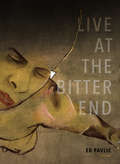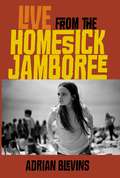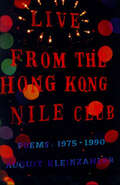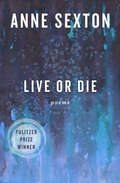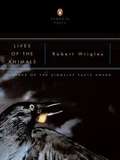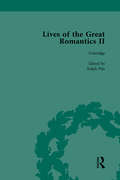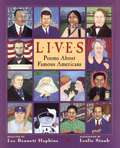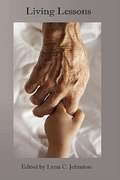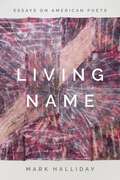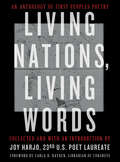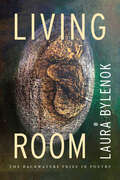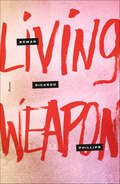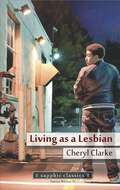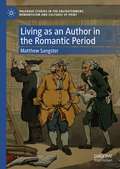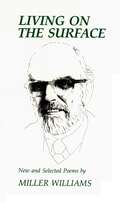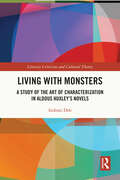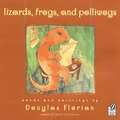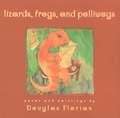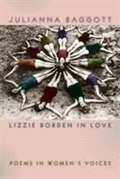- Table View
- List View
Live at the Bitter End
by Ed PavlicRecasting the “trial of the century,” Ed Pavli ’s vertiginous new collection puts a century of segregation on trial for its soulSet in the vernacular origins of modernity, Live at the Bitter End puts the racialized logic of 20th century aesthetics on trial. Mixing anonymous voices with the testimonies of figures such as Paul Cézanne, Charles Mingus, Emma Bardac, Erik Satie, Alberto Giacometti, Billie Holiday, Pierre Bonnard, Samuel Beckett, Miles Davis, and others, Ed Pavli weaves a playfully raucous and intimately violent work of satirical force. Adhering to the structure of a murder trial, Live at the Bitter End bears lyrical witness to racial separation, masquerade, mongrelization, and communion to show how those connections (in love, lust, trust and betrayal) sound deep in the textures of who we are.
Live from the Homesick Jamboree (Wesleyan Poetry Series)
by Adrian BlevinsLive from the Homesick Jamboree is a brave, brash, funny, and tragic hue and cry on growing up female during the 1970s, "when everything was always so awash" that the speaker finds herself adrift among adults who act like children. The book moves from adolescence through a dry-eyed, poignant exploration of two marriages, motherhood, and the larger world, with the headlong perceptiveness and brio characteristic of Adrian Blevins's work. This poetry is plainspoken and streetwise, brutal and beautiful, provocative and self-incriminating, with much musicality and a corrosive bravura, brilliantly complicated by bursts of vernacular language and flashes of compassion. Whether listening to Emmylou Harris while thinking she should be memorizing Tolstoy, reflecting on her "full-to-bursting motherliness," aging body, the tensions and lurchings of a relationship, or "the cockamamie lovingness" of it all, the language flies fast and furious. As the poet Tony Hoagland wrote of Blevins's previous book, The Brass Girl Brouhaha, "this is the dirty, trash-talking, highly edified real thang."
Live from the Hong Kong Nile Club: Poems: 1975–1990
by August KleinzahlerThe early poems of an American master"I have loved the air outside Shop-Rite Liquoron summer eveningsbetter than the Marin hills at dusklavender and goldstretching miles to the sea.At the junction, up from the synagoguea weeknight, necessarilyand with my father--a sale on German beer.Air full of living dust:bus exhaust, air-borne grains of pizza crustwounded crystalsappearing, disappearingamong streetlights and unsuccessful neon."--"Poetics"August Kleinzahler's first collections won him a cult following but have long been out of print and hard to find. Here Kleinzahler--acclaimed by The Times (London) for the "vision and confident skill to make American poetry new"--has selected the best of the poems collected in Storm over Hackensack (1985) and Earthquake Weather (1989) and added an autobiographical Preface in Live from the Hong Kong Nile Club.
Live or Die: Poems
by Anne SextonWinner of the Pulitzer Prize: A gripping poetry collection mapping the thorny journey from madness to hope With her emotionally raw and deeply resonant third collection, Live or Die, Anne Sexton confirmed her place among the most celebrated poets of the twentieth century. Sexton described the volume, which depicts a fictionalized version of her struggle with mental illness, as "a fever chart for a bad case of melancholy." From the halls of a psychiatric hospital--"the scene of the disordered scenes" in "Flee on Your Donkey"--to a child's playroom--"a graveyard full of dolls" in "Those Times . . ."--these gripping poems offer profound insight on the agony of depression and the staggering acts of courage and faith required to emerge from its depths. Along with other confessional poets like Sylvia Plath and Robert Lowell, Sexton was known for grappling with intimate subjects traditionally considered taboo for poetry such as motherhood, menstruation, and drug dependence. Live or Die features these topics in candid and unflinching detail, as Sexton represents the full experience of being alive--and a woman--as few poets have before. Through bold images and startlingly precise language, Sexton explores the broad spectrum of human emotion ranging from desperate despair to unfettered hope.
Lives of the Animals
by Robert WrigleyLives of the Animals takes us to that place where the boundaries between predator and prey, the observer and the observed, merge, reverse, become re-imagined. We find ourselves inside a story of death and life, witness to acts of survival so primal they seem less instinctive than passionate. And it is passion that most informs these poems: the bond between lovers, between parent and child, between humans and other animals, both wild and domestic, that populate our shared world of hunger and need. .
Lives of the Animals
by Robert WrigleyLives of the Animals takes us to that place where the boundaries between predator and prey, the observer and the observed, merge, reverse, become re-imagined. We find ourselves inside a story of death and life, witness to acts of survival so primal they seem less instinctive than passionate. And it is passion that most informs these poems: the bond between lovers, between parent and child, between humans and other animals, both wild and domestic, that populate our shared world of hunger and need.
Lives of the Great Romantics, Part II, Volume 1
by John Mullan Ralph Pite Fiona Robertson Jenny WallaceIn this second collection of biographical accounts of Romantic writers, the characters of Keats, Coleridge and Scott are recalled by their contemporaries, offering insights into their lives and writings, as well as into the art of 19th-century biography.
Lives of the Great Romantics, Part II, Volume 2: Keats, Coleridge And Scott By Their Contemporaries (Lives Of The Great Romantics Ser.)
by John Mullan Ralph Pite Fiona Robertson Jenny WallaceIn this second collection of biographical accounts of Romantic writers, the characters of Keats, Coleridge and Scott are recalled by their contemporaries, offering insights into their lives and writings, as well as into the art of 19th-century biography.
Lives: Poems About Famous Americans
by Lee Bennett Hopkins Leslie StaubPoetry that makes us appreciate the magnitude of lives filled with courage, enthusiasm, inspiration. Lives: Poems About Famous Americans is the ideal introduction to sixteen American personalities who have changed the course of history. Favorite anthologist Lee Bennett Hopkins has brought together the work of a number of accomplished writers and poets, among them Jane Yolen, Nikki Grimes, and X. J. Kennedy, to portray such figures as Sacagawea, Babe Ruth, John Fitzgerald Kennedy, and Martin Luther King, Jr. Leslie Staubs portraits contain a poetry of their own, capturing a bit of history in the glint of smile or the reach of a hand. Lives is a book for all readers to savor. Notable Children's Trade Books in the Field of Social Studies 2000, National Council for SS & Child. Book Council
Living Lessons
by Lynn C. JohnstonLiving Lessons is an inspirational collection of short stories and poems illustrating the enduring legacy of life's most important lessons in courage, tolerance, optimism, love and support as it is passed to us by the amazing people who touch our lives. These pieces, written by some of today's most prolific writers, will warm your heart, uplift your spirit and leave you with a greater appreciation of what can be learn from others. Contributors include Poet Laureates Elaine Morgan and Michael S. Glaser, Pushcart Prize winner Paul Hostovsky, New York Post and Huffington Post columnist Tina Traster, several Chicken Soup for the Soul(r) contributors and dozens of noted writer
Living Name: Essays on American Poets
by Mark HallidayLiving Name is a collection of essays on American poetry written by an expert practitioner of that art. Poet and critic Mark Halliday turns his attention to the work of poets who interest him because they create convincing voices of people dealing with the everyday. Instead of trying to survey the vast variety of modern poetry, Halliday considers an idiosyncratic selection of poets he finds compelling for their originality of style and exploration of human possibilities, including Walt Whitman, Kenneth Fearing, Kenneth Koch, Robert Pinsky, Rachel Wetzsteon, Tony Hoagland, Claire Bateman, and Dean Young. Each essay includes thorough close readings of individual poems, reflecting a commitment to the idea that a poem as a work of art needs to be appreciated as a unified whole. Halliday’s writing is judicious and meditative but not overly scholarly or academic. A long piece at the beginning of the book, “Poetry and the Rescue of Particulars,” argues that poems often attempt to reclaim the details of our usual routines from the chaotic confusion and noise of daily existence. The impulse to write a poem, Halliday believes, often stems from the notion that representing in poetry a sliver of human life keeps it in the world, as a trace of the vanishing moment is retained and endowed with some form of lasting reality. Throughout Living Name, Halliday enacts the allegiances that have driven his criticism for many years: to listen for genuine voices in poetry; to study whole poems, not merely passages; and to look for intelligent efforts to illuminate truths of human experience.
Living Nations, Living Words: An Anthology Of First Peoples Poetry
by Joy HarjoA powerful, moving anthology that celebrates the breadth of Native poets writing today. Joy Harjo, the first Native poet to serve as U.S. Poet Laureate, has championed the voices of Native peoples past and present. Her signature laureate project gathers the work of contemporary Native poets into a national, fully digital map of story, sound, and space, celebrating their vital and unequivocal contributions to American poetry. This companion anthology features each poem and poet from the project—including Natalie Diaz, Ray Young Bear, Craig Santos Perez, Sherwin Bitsui, and Layli Long Soldier, among others—to offer readers a chance to hold the wealth of poems in their hands. The chosen poems reflect on the theme of place and displacement and circle the touchpoints of visibility, persistence, resistance, and acknowledgment. Each poem showcases, as Joy Harjo writes in her stirring introduction, “that heritage is a living thing, and there can be no heritage without land and the relationships that outline our kinship.” In this country, poetry is rooted in the more than five hundred living indigenous nations. Living Nations, Living Words is a representative offering.
Living On Fire: A Collection of Poems
by Virginia Hamilton AdairReturning to the range, structure, and lyric quality of the national bestseller Ants on the Melon, Virginia Hamilton Adair's new collection of poetry, Living on Fire, establishes more firmly than ever this writer's literary eminence. In clear, memorable poems--about love in its many variations, about music, about the American desert, about mortality, and about her own blindness--the poet speaks to her readers with a directness distinctly American, and with feeling enhanced and deepened by technical rigor. Of young love she writes, "Their arms bound them together like timbers/for a raft and they rocked a little, as if on water. " Of her blindness: "Blind to abundance when I was not blind,/I breathe one rose and hold it in my mind. " Of the Mojave she recalls "long purple robes trailing down the arroyos. /As the sky dims into dusk. " All the poems in Living on Fire create their own small worlds. During a long-ago trip down the Mississippi, the author recalls, "Sometimes our waterways became narrow and dim, dark mirrors/under live-oak branches hung with Spanish moss and snakes. " A new love affair brings "this nighttime madness/in the backseat of a roadster. " Later, she remarks with almost as much wonder as sadness, "Sightless,/I have become a stranger to my own person. " Together, these poems articulate a sensibility at once distinctive and universal. Virginia Hamilton Adair has taken the specificities of her own sometimes joyous, sometimes tragic life and transformed them into powerful celebrations and elegies whose beauty and profundity will affect everyone who reads them. Even in the midst of despair, this is a poet whose work, in its sustained passion, indeed lives on fire.
Living Prayers, Poems and Poetry
by True E. ReadywriterThe author mingles poems, prayers and devotional thoughts.
Living Quarters
by Adrienne SuLiving Quarters uses both the structure of a domestic space and the rhythms of the seasons to seek, but not reliably find, order and consolation in life's seeming disorder. Relationships dissolve; deaths come too soon; the past vanishes; the earth that gives beautiful and nourishing foods swallows up the creatures for whom it provides. These poems struggle with that mix of affirmation and destruction, celebrating nature's generosity while trying to make peace with its cruelty.Thought-provoking poems reflect an intimate internal dialogue, addressing, among other ideas, Is it really safer at home, or are there perils within our closest relationships, in daily domestic ritual? And where is home, when people are constantly moving, marriages dissolving, new relationships beginning and ending? When is a house just a house, and when does it become a home? Cooking warms a house and gives it a feeling of home, but does there also need to be a surrounding, anchoring community?
Living Room (The Backwaters Prize in Poetry)
by Laura BylenokDeeply phenomenological and ecological, Laura Bylenok&’s poems in Living Room imagine the lived reality of other organisms and kinds of life, including animals, plants, bacteria, buildings, and rocks. They explore the permeability of human and nonhuman experience, intelligence, language, and subjectivity. In particular, the poems consider so-called model organisms—nonhuman species studied to understand specific and often human biological processes, diseases, and phenomena—as well as an experience of self and world that cannot be objectively quantified. The impulse of these poems is to slow down, to see and feel, and to listen closely. Language becomes solid, palpable as fruit. Long lines propel breath and push past the lung&’s capacity. Life at a cellular level, synthesis and symbiosis, is revealed through forests, fairy tales, and vines that grow over abandoned houses and hospital rooms. A living room is considered as a room that is lived in and also a room that is alive. Cells are living rooms. A self is a room that shares walls with others. Interconnection and interplay are thematic, and the network of poems becomes a linguistic rendering of a heterogeneous and nonhierarchical ecosystem, using the language of biology, genetics, and neurochemistry alongside fairy tale and dream to explore the interior spaces of grief, motherhood, mortality, and self.
Living Weapon: Poems
by Rowan Ricardo PhillipsAward-winning essayist and poet Rowan Ricardo Phillips presents a bracing renewal of civic poetry in Living Weapon.. . . and we’d do this againAnd again and again, without everKnowing we were the weapon ourselves,Stronger than steel, story, and hydrogen.— from "Even Homer Nods"A revelation, a shoring up, a transposition: Rowan Ricardo Phillips’s Living Weapon is a love song to the imagination, a new blade of light honed in on our political moment. A winged man plummets from the troposphere; four NYPD officers enter a cellphone store; concrete sidewalks hang overhead. Here, in his third collection of poems, Phillips offers us ruminations on violins and violence, on hatred, on turning forty-three, even on the end of existence itself. Living Weapon reveals to us the limitations of our vocabulary, that our platitudes are not enough for the brutal times in which we find ourselves. But still, our lives go on, and these are poems of survival as much as they are an indictment. Couched in language both wry and ample, Living Weapon is a piercing addition from a “virtuoso poetic voice” (Granta).
Living as a Lesbian (Sapphic Classic)
by Cheryl ClarkeLiving as a Lesbian is Cheryl Clarke's paean to lesbian life. Filled with sounds from her childhood in Washington, DC, the riffs of jazz musicians, and bluesy incantations, Living as a Lesbian sings like a marimba, whispering "i am, i am in love with you."Living as a Lesbian chronicles Clarke's years of literary and political activism with anger, passion, and determination. Clarke mourns the death of Kimako Baraka ("sister of famous artist brother"), celebrates the life of Indira Gandhi, and chronicles all kinds of disasters— natural and human-made. The world is large in Living as a Lesbian but also personal and intimate. These poems are closely observed and finely wrought, with Clarke's characteristic charm and wit shining throughout.In 1986, Living as a Lesbian captured the vitality and volatility of the lesbian world; today, in a world both changed and unchanged, Clarke's poems continue to illuminate our lives and make new meanings for Living as a Lesbian.
Living as an Author in the Romantic Period (Palgrave Studies in the Enlightenment, Romanticism and Cultures of Print)
by Matthew SangsterThis book explores how authors profited from their writings in the late eighteenth and early nineteenth centuries, contending that the most tangible benefits were social, rather than financial or aesthetic. It examines authors’ interactions with publishers; the challenges of literary sociability; the vexed construction of enduring careers; the factors that prevented most aspiring writers (particularly the less privileged) from accruing significant rewards; the rhetorical professionalisation of periodicals; and the manners in which emerging paradigms and technologies catalysed a belated transformation in how literary writing was consumed and perceived.
Living in the Past
by Philip SchultzSet in Rochester, New York, in the fifties, this extraordinary book-length sequence traces the year in a boy's life leading up to his bar mitzvah and passage into manhood. There is a lively mixture of ethnic groups here-many of them displaced by the war in Europe-with new hopes and dreams. It is a uniquely American place, where "no matter how far down you started from, you began again from the beginning." As the alternately elegiac and humorous poems conclude, the boy has become a man with a family of his own, but memories of his childhood linger. The cycles of life go on, and Schultz continues to render them with wit, grace, and above all a sense of wonder. I know what Mrs. Einhorn said Mrs. Edels told Mr. Kook about us: God save us from having one shirt, one eye, one child. I know in order to survive. Grandma throws her shawl of exuberant birds over her bony shoulders and ladles up yet another chicken thigh out of the steaming broth of the infinite night sky. -from "Grandma climbs"
Living on the Surface: New and Selected Poems
by Miller WilliamsFederico Garc a Lorca did not know Miller Williams, of course, but he was describing him when he told us that a poet is "professor of the five senses." The poems in this collection cover thirty years of loving contact with the endlessly varied surfaces of the world. They are poems in which the common furniture of our lives is always present, in which the universal resides in the local, in which elegance is born of clarity.We have enough to fret about.Almost all of us concur,we'll live with the holidays we haveand the grace of God as if it were.("He Speaks to His Arguing Friends and to Himself")The poems are moments from human lives turned into art, but never removed from where they were found.Grass grows out of every sidewalk crack.Briars have taken the garden.The arteries of the old dog harden almost audibly.The basement door is broken and the mice are back.("A Summer Afternoon An Old Man Gives Some Thought to the Central Questions")As John Ciardi wrote of Williams and his work, "Taken beginning to end, as both the word and the fact go, these are remarkable poems for -- among other things -- the deceptively plain straightforwardness of them. Miller Williams writes about ordinary people in the extraordinary moments of their lives. Even more remarkable, doing this, is how perilously close he plays to plain talk without ever falling into it; how close he comes to naked sentiment without yielding to it; how close he moves to being very sure without ever losing the grace of uncertainty. Add to this something altogether apart, that what a good reader can expect to sense, coming to these poems, is a terrible honesty, and we have among us a voice that makes a difference."
Living with Monsters: A Study of the Art of Characterization in Aldous Huxley’s Novels (Literary Criticism and Cultural Theory)
by Indrani DebAldous Huxley is one of the most well-known modernist intellectuals of the first half of the twentieth century, excelling in novels, essays, philosophical tracts, and poems. His novels are special in that they use a unique form – the novel of ideas – with which to satirize human nature and the pride regarding human achievement. Few readers of English literature are not acquainted with books like Point Counter Point, Eyeless in Gaza and Brave New World (novels dealt with in detail). A proper study of Huxley’s characterization in his novels opens up a veritable treasure-house of history, philosophy, psychology, and incisive satire. "Characterology", as the art of projecting different kinds of characters is called, is an ancient art, which either aimed at representing the entire universe in a single individual, or the same in a variegated form through various individuals. Huxley uses the latter kind in his representation of character, and as such, a study of the characters of his novels opens up a general interpretation of the universe as a whole.
Lizards, Frogs, and Polliwogs
by Douglas FlorianFrom transparent glass frogs and ravenous rattlesnakes to sticky geckos and stressed-out skinks, this slithery spectacle showcases once again Douglas Florian's incomparable skill for making poetry informative, fun--and irresistible!
Lizards, Frogs, and Polliwogs: Poems And Paintings
by Douglas FlorianFrom transparent glass frogs and ravenous rattlesnakes to sticky geckos and stressed-out skinks, this slithery spectacle showcases once again Douglas Florian's incomparable skill for making poetry informative, fun--and irresistible!
Lizzie Borden in Love: Poems in Women's Voices
by Julianna BaggottWomen s voices offering an intimate view into women s lives"Lizzie Borden in Love," a collection of poems by national bestselling author Julianna Baggott, offers poignant commentary in the voices of women as varied as Mary Todd Lincoln and Monica Lewinsky. The poems often focus on a particular moment in life: Katherine Hepburn discovers the dead body of her brother in an attic, or painter Mary Cassatt mourns the failure of her eyesight. Sometimes heartbreaking, sometimes ecstatic, the poems in this collection never fail the trust of the subjects of their intimate portrayals"
